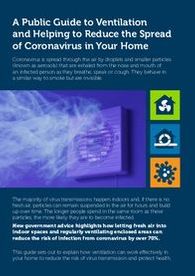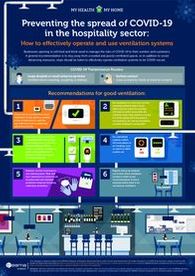Ventilation and Covid-19
Coronavirus is spread through the air by droplets and smaller particles (known as aerosols) that are exhaled from the nose and mouth of an infected person as they breathe, speak or cough.
The majority of virus transmissions happen indoors and, if there is no fresh air, particles can remain suspended in the air for hours and build up over time. The longer people spend in the same room as these particles, the more likely they are to become infected.
In November 2020, the UK Government released a film showing the importance of ventilation in homes and other buildings to reduce the spread of COVID-19. While the focus on the film is simple natural ventilation through opening windows, the same preventative benefits can be obtained from mechanical ventilation systems. What’s more, a controlled ventilation system can make sure that fresh air is reaching all rooms in your home and pollutants are directly extracted without the negative aspects of opening windows such security and cold incoming air.
The BEAMA Ventilation group has produced a guide to ventilation and Covid-19, which can be downloaded from this page. This covers both natural ventilation and how to use existing ventilation systems to best effect.
We have also produced a guide to using ventilation in the hospitality sector. This stresses the need for effective ventilation alongside social distancing measures inside UK pubs and restaurants when allowed to open and provides six key recommendations to help keep premises COVID-secure. It considers optimal settings for mechanical ventilation systems, effective toilet ventilation, centralised systems, ventilation maintenance and ventilating without a mechanical system.







